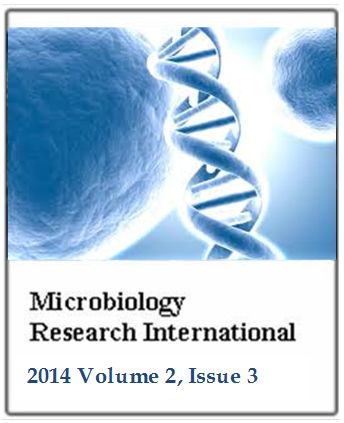Vulvovaginal candidiasis: Agents and its virulence factors
Ziab Zakey Al-Ahmadey and Sahar Ali MohamedMicrobiology Research International
Published: September 25 2014
Volume 2, Issue 3
Pages 28-37
Abstract
Candida species are the most common cause of fungal infections, leading to a range of life-threatening invasive to non-life-threatening mucocutaneous diseases. Candida spp. is the second most common vaginal infection after the bacterial vaginosis. A number of risk factors have been identified in a variety of studies. Vulvovaginal candidiasis (VVC) risk factors have been identified, including genetic, intermediate age, pregnancy, uses of contraceptive pills, frequent sexual intercourse, uncontroled diabetes mellitus, contraceptive devices, and antibiotics. C. albicans is both a commensal and a pathogen that can exhibit yeast, pseudohyphae and hyphae morphology. The second most common species to cause VVC is C. glabrata, which occurs in about 5% of infections. Treatment of Candida spp. infections can include azoles (fluconazole) but rarely requires amphotericin B with 5 fluocytosine. This review summarizes all known clinical and experimental information about VVC with comparisons between C. albicans and non-Candida albicans Candida (NCAC) species and their veriulence factors.
Keywords: Candida spp., vulvovaginal candidiasis, biofilm formation, filamentous, antifungal.
Full Text PDF
